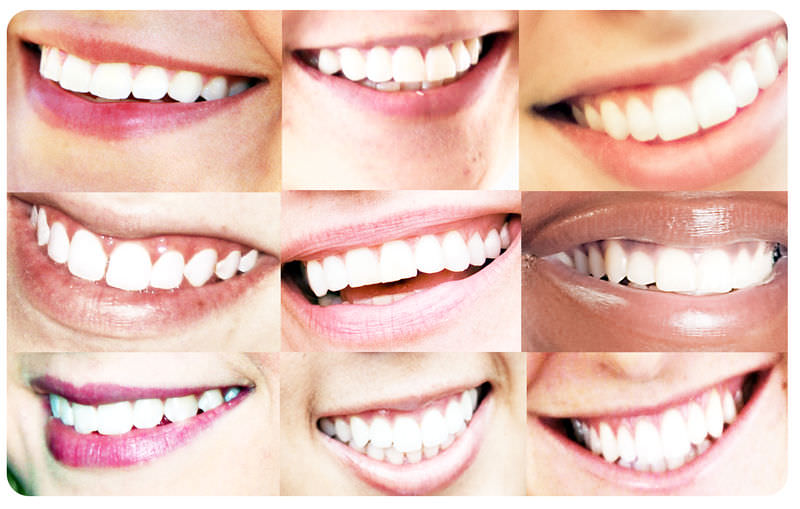5.6 消化的开始
章节大纲
-
What's the first step in the digestion process?
::消化过程的第一步是什么?It all starts with the mouth. Food goes in, you chew it up, swallow it, then what happens? The process of turning that food into energy , , and other things necessary for life begins. But it all starts with the mouth.
::食物从嘴开始。食物进入,你把它嚼碎,吞下去,然后会发生什么?把食物变成能量的过程, 以及生命所必需的其他东西。但是这一切都从嘴开始。The Start of Digestion: The Mouth to the Stomach
::消化的开始: 口对胃的口The upper GI tract is the primary site of mechanical digestion . The chemical digestion of and proteins also begins in the upper GI tract.
::上GI道是机械消化的主要场所,化学消化和蛋白质也从上GI道开始。The Mouth
::嘴唇The mouth is the first organ in the digestive tract, but digestion may start even before you put the first bite of food in your mouth. Why? The sight or aroma of an appetizing dish can stimulate the release of digestive by salivary glands inside your mouth. The major salivary enzyme is amylase . Once you start eating, amylase begins the chemical digestion of carbohydrates in the food. It helps break down complex starch molecules into simpler sugar molecules.
::口腔是消化道的第一个器官, 但是消化可能开始, 甚至在你把第一口食物咬进嘴里之前。 为什么? 开胃菜的视觉或芳香可以刺激通过口腔中的唾液腺体释放消化剂。 主要的唾液酶是氨基酶。 一旦你开始吃东西, 氨基酶会开始食物中碳水化合物的化学消化。 它会帮助将复杂的恒星分子分解成简单的糖分子。The mouth also plays an important role in mechanical digestion. The teeth help digest food mechanically by breaking it into smaller pieces. Human teeth have different shapes and functions. As you can see in Figure , the incisors and canines at the front of the mouth are relatively thin and sharp. They shear and tear food when you bite into it. The premolars and molars at the back of the mouth are larger and broader. They grind food into smaller pieces as you chew.
::牙齿通过切成小块来机械消化食物。 人牙有不同的形状和功能。 如图所示, 口口前的切口和犬牙相对薄和尖锐。 当你咬入口袋时,它们剪切和撕裂食物。 嘴后部的牙前牙和磨牙更大,范围更广。 它们将食物磨成小块, 当你咀嚼的时候。Types of human teeth.
::人牙类型。Saliva from the salivary glands moistens the food and makes it easier to chew. The muscular tongue helps mix the food with saliva and the enzymes it contains. When you swallow, the lump of chewed food, now called a bolus, passes into the pharynx .
::唾液腺的唾液使食物湿润,更容易咀嚼。 肌肉舌有助于将食物与唾液和它所含的酶混合在一起。 当你吞咽时,被咀嚼的食物的一块块块,现在称为肉丸,就会进入法老。The pharynx connects the mouth to the rest of the digestive tract. It also connects the mouth and nose to the rest of the . As food is pushed to the back of the mouth by the tongue, it sets off an automatic response that closes the pharynx off from the respiratory system. This prevents you from accidentally inhaling food when you swallow.
::Pharynx 将嘴与消化道的其余部分连接起来, 同时也将嘴和鼻子与其他部分连接起来。 当食物被舌头推向嘴后部时, 它触发自动反应, 关闭呼吸系统, 关闭口腔, 防止吞咽时不小心吸入食物 。Esophagus
::Esophagus( 以硫磷)From the pharynx, the bolus moves into the esophagus . The esophagus is a narrow tube about 20 centimeters long in adults. It begins at the pharynx, passes through the chest, and ends at the opening to the stomach . The function of the esophagus is to pass food from the mouth to the stomach. This takes only a few seconds. The esophagus does not produce digestive enzymes and does not have any other digestive functions.
::肉毒杆菌从pharynx进入食道。 食道菌是一个狭窄的管子, 长约20厘米, 长于成人。 它从pharynx开始, 穿过胸口, 到胃的开口结束。 食道动物的作用是将食物从嘴部送到胃部。 这只需要几秒钟。 食道动物不生产消化酶, 没有其他消化功能 。Food moves through the esophagus due to peristalsis . At the end of the esophagus, a muscle called a sphincter controls the entrance to the stomach. The sphincter opens to let food into the stomach and then closes again to prevent the food from passing back into the esophagus.
::食物通过食道,因为有持久性。在食道的末端,一种叫“螺旋杆”的肌肉控制着胃的入口。 麻雀打开了食物进入胃部,然后再次关闭,以防止食物返回食道。Stomach
::胃The stomach is a sac-like organ located between the end of the esophagus and the beginning of the . In the stomach, food is further digested both mechanically and chemically. Churning movements of the stomach’s thick muscular walls break down food mechanically. The churning movements also mix the food with fluids secreted by the stomach. These fluids include hydrochloric acid and digestive enzymes.
::胃部是位于食道末端和食道开始之间的一种类似于盐的器官。 在胃部,食物在机械和化学两方面都被进一步消化。胃部厚厚的肌肉壁的刮伤将食物机械地破碎。 胃部运动也把食物与胃部隔绝的液体混合在一起。 这些液体包括盐酸和消化酶。-
Hydrochloric acid gives the stomach a very acidic environment. This helps destroy any
that have entered the stomach in foods or beverages. An acidic environment is also needed for the stomach’s digestive enzymes to work.
::盐酸给胃带来一种非常酸化的环境。 这有助于摧毁任何以食物或饮料进入胃的人。 胃消化酶工作也需要一种酸环境。 -
Digestive enzymes secreted in the stomach help break down proteins into smaller molecules called peptides. The main digestive enzyme in the stomach is
pepsin
.
::胃部中隐藏的消化酶有助于将蛋白质分解成小分子,称为peptides。胃部的主要消化酶是pepsin。
, alcohol, salt, and simple sugars can be absorbed through the lining of the stomach. Most other substances need further digestion in the small intestine before they can be absorbed. The stomach stores the food until the small intestine is ready to receive it. It may hold up to four liters of food when fully expanded. When the small intestine is empty, a sphincter opens between the stomach and the small intestine. This allows the partially digested food, now called chyme, to enter the small intestine.
::胃部的内衬可以吸收酒精、盐和简单的糖。其他物质大多需要在小肠胃中进一步消化,然后才能吸收。胃部将食物储存在小肠胃准备接受之前。当肠子完全膨胀时,它可以维持在四升的食物中。当小肠子空的时候,胃部和小肠部之间会打开一个刺青。这样,部分消化的食物,现在称为,就可以进入小肠部。Summary
::摘要-
The sight or aroma of an appetizing dish can stimulate the release of digestive enzymes by salivary glands inside your mouth.
::开胃菜的视线或芳香可以刺激通过口腔中的唾液腺释放消化酶。 -
Saliva from the salivary glands moistens the food and makes it easier to chew. The muscular tongue helps mix the food with saliva and the enzymes it contains.
::鼻涕腺的唾液使食物湿润,更容易咀嚼。 肌肉舌有助于将食物与唾液和其中的酶混合在一起。 -
As food is pushed to the back of the mouth by the tongue, it sets off an automatic response that closes the pharynx off from the respiratory system.
::当食物被舌头推向嘴后部时,它触发自动反应,切断呼吸系统对硫磺的接触。 -
The function of the esophagus is to pass food from the mouth to the stomach.
::食道的作用是把食物从嘴里传到胃里 -
Hydrochloric acid gives the stomach a very acidic environment. This helps destroy any bacteria that have entered the stomach in foods or beverages. An acidic environment is also needed for the stomach’s digestive enzymes to work.
::盐酸给胃带来一种非常酸化的环境。 这有助于摧毁任何以食物或饮料进入胃的细菌。 胃消化酶工作也需要一种酸环境。
Review
::回顾-
What is the major salivary enzyme called?
::主要的唾液酶叫什么来着? -
What is food called after being chewed?
::咀嚼后的食物叫什么来着? -
Does the esophagus produce any digestive enzymes?
::食道会产生消化酶吗? -
What substances can be absorbed by the stomach?
::胃部能吸收哪些物质?
-
Hydrochloric acid gives the stomach a very acidic environment. This helps destroy any
that have entered the stomach in foods or beverages. An acidic environment is also needed for the stomach’s digestive enzymes to work.

